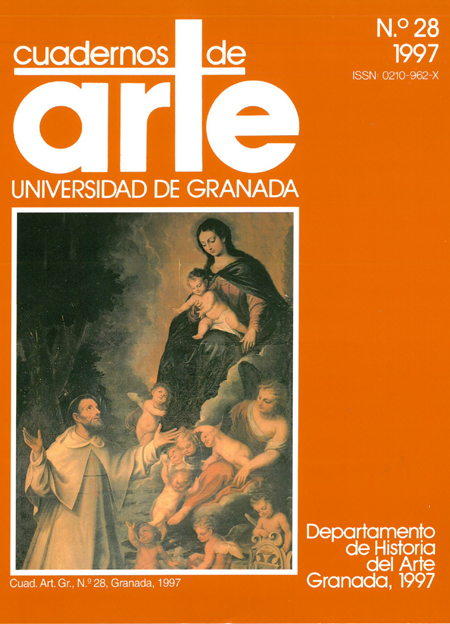An ephemeral Alhambra: The Spanish pavilion in the Universal Exhibition in Brussels (1910)
Keywords:
Arabic architecture, Moorish architecture, Ephemeral architecture, Architectural ornamentation, Exhibition pavilions, Universal Exhibitions, Universal Exhibition, 1910, Brussels, Cendoya Busquets, Modesto, Santisteban Márquez, Antonio, Escoriaza, NicolásAbstract
Spain's participation in Universal Exhibitions impiied in turn an involvement in the phenomenon of so-called "architectural nationalism", in which each country should be represented by a pavilion built in its characteristic
national style. Thus, from 1867 to 1929, the Spanish State drew on two different architectural traditions: on the one hand the neo-plateresque and on the other the neo-arabic in its neo-mudejar variety. For the Brussels Exhibition of 191 O a strongly nationalistic choice was made, since the Alhambra and Nazarí art were selected to represen! the country, along the lines of what we have come to call "neoarabic regionalism".
Downloads
Downloads
Published
How to Cite
Issue
Section
License
Los autores que publican en esta revista están de acuerdo con los siguientes términos:- Los autores conservan los derechos de autor y garantizan a la revista el derecho de ser la primera publicación del trabajo al igual que ser licenciado bajo una licencia Creative Commons que permite a otros compartir el trabajo con un reconocimiento de la autoría del trabajo y la cita de la fuente original, con un uso no comercial y siempre que no se hagan obras derivadas.
- Los autores pueden establecer por separado acuerdos adicionales para la distribución no exclusiva de la versión de la obra publicada en la revista (por ejemplo, situarlo en un repositorio institucional o publicarlo en un libro), con un reconocimiento de su publicación inicial en esta revista.
- Se permite y se anima a los autores a difundir sus trabajos electrónicamente (por ejemplo, en repositorios institucionales o en su propio sitio web) antes y durante el proceso de envío, ya que puede dar lugar a intercambios productivos, así como a una citación más temprana y mayor de los trabajos publicados (Véase The Effect of Open Access) (en inglés).


 ISSN-e: 2445-4567
ISSN-e: 2445-4567








